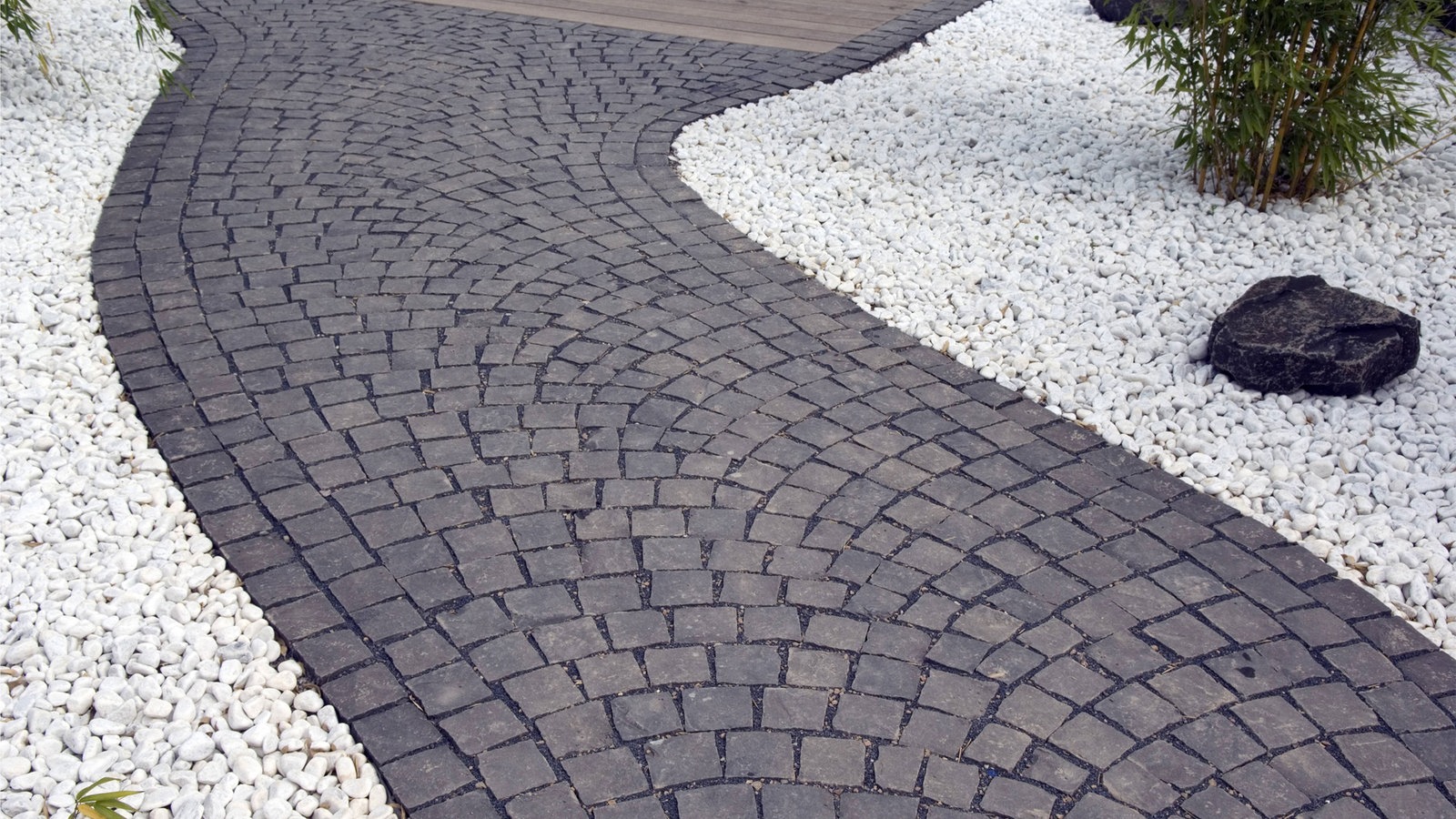Sealed areas are problematic because they do not allow rainwater to penetrate the ground. Instead, the water flows over the surface, which can lead to flooding. These surfaces also store heat and heat up the surrounding area. A sustainable solution is to use natural stones in the garden. Natural stone paths and beds allow water to seep away better. This replenishes the groundwater and relieves pressure on the sewage system. In addition, the spaces between the stones provide space for plants and small animals, which promotes biodiversity.
When drought-resistant plants grow between the stones, the garden not only looks beautiful but also helps cool the environment. With simple means, everyone can make an important contribution to climate protection by replacing sealed surfaces with natural, water-permeable elements.
Advantages of natural stone paths at a glance
- Water permeability: They enable better infiltration of rainwater, which promotes groundwater recharge and reduces the risk of flooding
- Ecological value: Microorganisms can settle between the stones, which increases biodiversity in the garden.
- aesthetics: Natural stones fit harmoniously into the garden landscape and offer a natural, rustic appearance.
Tips for creating a natural stone path
- planning: mark the route of the path and remove the turf.
- Prepare the surface: fill and compact a layer of sand or grit.
- Laying stones: lay the natural stones in a loose, natural-looking pattern. Large pebbles, pottery shards, natural paving stones, etc. can be used here. There are no limits to creativity.
- Design joints: Deliberately leave spaces for plants.
Plants integrate
- Plant selection: Choose plants that require few nutrients, such as thyme, sedum or saxifrage.
- placement: Place plants in the spaces between the stones.
- Care: These plants generally require little care and are hardy.
Natural stone beds
Natural stone beds offer another way to reduce sealed areas. Stack the natural stones to create decorative bed borders. You can also beautifully create a herbal spiral made of natural stones. A variety of herbs that adapt optimally to the different location conditions are recommended for a herbal spiral. Mediterranean herbs such as rosemary, thyme, sage and lavender thrive particularly well in the uppermost zone, which is dry and sunny. These plants require nutrient-poor and well-drained soil. In the middle area, which is partially shaded, herbs with moderate requirements grow, such as chives, coriander and lemon balm. These plants thrive in soil that is slightly richer in humus. The lower part of the spiral is suitable for moisture-loving herbs such as parsley, chives and watercress, which prefer nutrient-rich and humus-rich soil. Ensure good water drainage to avoid waterlogging!


